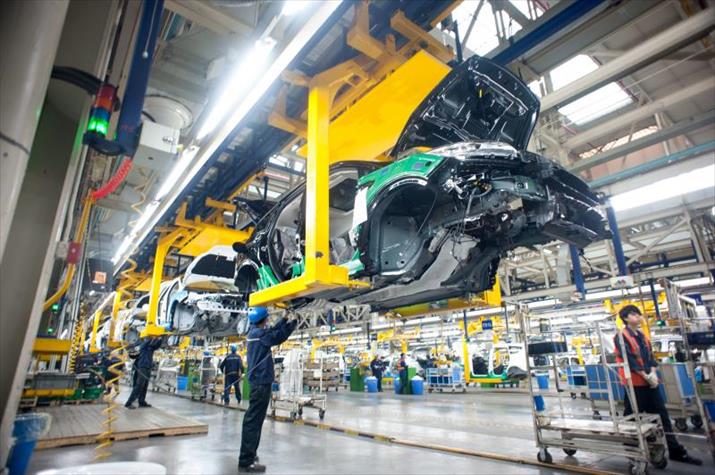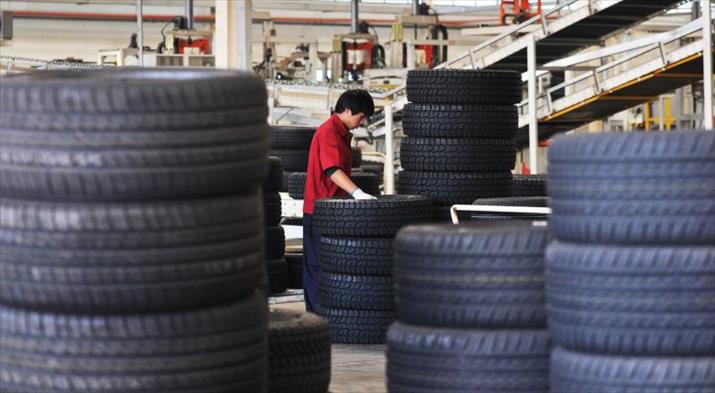| Mei Xinyu |
| A Fresh Take on Trade Frictions | |
| China seeks win-win economic and trade relations with the U.S. but does not fear a trade war | |
|
|
 A Changan Ford Automobile factory, a Sino-U.S. joint venture, in southwest China's Chongqing Municipality (XINHUA)
China has faced mounting pressure from trade conflicts with the United States in recent years, and it is widely expected that the situation will become more tense as a result of the Trump administration's forthcoming policies on China. The United States launched 11 anti-dumping and nine anti-subsidy investigations against China in 2016, an 81.1 percent surge from the previous year. The 20 cases involved $3.7 billion worth of trade, an increase of 131 percent year on year, according to statistics from China's Ministry of Commerce. However, it would be naïve and ridiculous for people to take the rise in trade disputes as a sign of a declining Chinese economy or to assume that the United States could coerce China to accept unreasonable economic demands by threatening to wage a large-scale trade war. Win-win cooperation possible Sino-U.S. economic and trade relations are not a zero-sum game but, to a large extent, do represent a win-win strategy. America's mounting fiscal and trade deficits are so huge that thorough reformative adjustments are imperative. It is therefore understandable that the Trump-led government hopes to solve chronic problems haunting the American economy and stabilize the country's macro economy. Sino-U.S. trade and China's foreign trade can only achieve stability and continued growth when America's economy realizes stable and sustainable development. Since the stability and health of America's macro economy have a significant influence on China's foreign trade, China should not turn a blind eye to it. If the economic policies implemented by the Trump administration can really bring down America's deficit levels, China will be able to secure a more sustainable market, and the entire international economic system will become more stable. Therefore, as far as China is concerned, the best way forward is to reach a series of economic and trade agreements with the United States on reasonable terms while simultaneously adjusting its economic development model as the United States does so as well. In this way, the two countries' capacities to secure sustainable growth will grow at the same pace, contributing to the stability and long-term growth of the global economy. China should strive for win-win Sino-U.S.economic and trade arrangements. Yet, whether or not those goals can be achieved to a great extent depends on the United States. On formal occasions, from speeches on diplomatic strategies delivered during the election campaign to his inaugural address, Trump has made clear the United States' willingness to carry out mutually beneficial cooperation with China and Russia. By choosing Terry Branstad as ambassador to China and through his recent telephone conversation with Chinese President Xi Jinping, Trump is indicating that Sino-U.S. relations are moving away from previous setbacks.  An export-oriented tire company in Dongying City, east China's Shandong Province (XINHUA)
Not afraid of a trade war There are still quite a few uncertainties regarding Sino-U.S. economic and trade relations. Some people believe that trade disputes would damage China's economy, and the risk of a large-scale trade war with the United States would force China to accept unreasonable demands. But in fact, even if an extensive trade war occurs between China and the United States, it will not drag down China's status in the international economic system. Given all that, China will not be coerced into accepting unreasonable terms in future trade conflicts and negotiations. So far, China has made great strides in its attempts to catch up economically. As the world's second largest economy, largest manufacturer and goods exporter, the output of China's equipment manufacturing industry accounted for one third of the world's total in 2013, with a quite complete set of industrial sectors in place. Despite that, economic growth fluctuations are inevitable. It's therefore unnecessary to compare China's growth rate with historical figures amidst the worldwide economic and trade slowdown—China should be compared to other major countries instead. As long as China grows faster than other countries, its status in the international economic system will ascend, preventing China from being outpaced. Since the breakout of the 2008 global financial crisis, external economic and financial crises have provided opportunities for China to push forward industrial upgrading and get rid of external economic shock. Why? During a crisis, all countries experience a decrease in absolute growth. However, in competent countries and industries, relative growth expands despite the general economic slowdown. When they outpace their rivals, they are more likely to harvest a larger share of the available profits when the economy recovers. For instance, China's economy grew 13 percent while the global economy was still prosperous in 2007—5 percentage points faster than its major competitors. During the recession, the country's growth slowed to 8 percent, while its competitors dropped to 1 percent or even negative growth. China has thus outpaced its competitors. Therefore, global economic crises are a good opportunity for countries with China's capacity to resist risks, since they can weed out rivals amid a worldwide slowdown. Since the outbreak of the 2008 global financial crisis, China's share in the world economy and trade has risen significantly. In 2007, China's GDP accounted for 10.8 percent of the world total and 24.8 percent of emerging economies' total GDP, while its exports accounted for 7.8 percent of the world total and 23.2 percent of emerging economies' total exports. In 2015, its GDP took up 17.3 percent of the world output and 30 percent of that of emerging economies while the share of its exports rose to 11.6 percent of the world total and 31.7 percent of that of emerging economies, according to data from the International Monetary Fund (IMF). In the first decade of the 21st century, Brazil, Russia, India and South Africa were deemed the most promising emerging markets likely to surpass China. But as a result of a series of economic fluctuations in the past few years, China's economic growth has far exceeded theirs. As a result, China's proportion in the economic aggregate of BRICS nations keeps expanding. Now, China and the United States' economic status indicate that, should a large-scale trade dispute break out between them, a global trade recession would emerge. On the other side, even if the trade disputes get out of control, China's status in the international economic system would not suffer, and other emerging countries are much less likely to surpass China. Given that China's position in the world would remain intact even in the worst-case scenario, in future negotiations, China's counterparts should not threaten the start of a trade war. The best way to handle such issues is through open and fair negotiations. Copyedited by Bryan Michael Galvan Comments to liuyunyun@bjreview.com |
|
||||||||||||||||||||||||||||
|